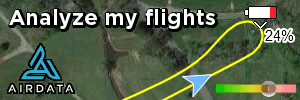Now the Alientech Duo-2 and Duo-3??
I’m beginning to believe they are a complete waste of money. Our testing (vol. fire dept) shows very little “real world” improvement in range/distance/penetration of the drone to controller comms.
We performed unscientific testing the other day.
Don’t hate.. our primary purpose for the distance is for BVLOS use of drones to do a quick wildfire sizeup. Operation only over heavily forested area with no people, vehicles, structures or….
The Air-3s with RC2 FAR outperformed the Mavic-3 (original model) with:
- RC-Pro
- RCN1
- RC-Plus (“modified” purchase from China based eBay seller)
- RC-Plus with Duo2
- RC-Plus with Duo3
By A LOT!
The Air-3s outperformed everything by thousands of feet and has the tiniest little antennas on the RC2 vs a directional bidirectionally amplified antenna system.!
I just wish we had waited on our recent Mavic-3 Pro purchase.
The Mavic-4 with 04 and a more robust controller should be a huge improvement.
Also, our battery inventory and accessories are all “Mavic-3”.
Even our Tundra lights are physically specific to the
M3.
Note: We use the Duo2 & Duo3 mounted directly to the RC-Plus via the “Adapter Bar” AND, using cabling, we sometimes use them mounted to tripods or on the rooftop of rescue apparatus which we use for communications and IC use. Short length and high quality mil-spec Belden RG400 and RG223 (double shielded / silver plated conductors / kinda $$) is used.
Some REAL testing needs to be done on Alientech products.
Even without a teardown, testing can still be done using test gear. (advice = do NOT get into THAT hobby. If you think drones are costly, wait until you price out RF test gear like spectrum analyzers, VNAs, etc..)


When you’re spending $1k for an Alientech unit and even more for the RC-Pro or RCxxxxx controller connector installation, you expect to see phenomenal performance increases. Something DJI achieved in 04 without the bulky and expensive hardware.
(Not disparaging Alientech. Just looking for concrete performance that is predictable..









